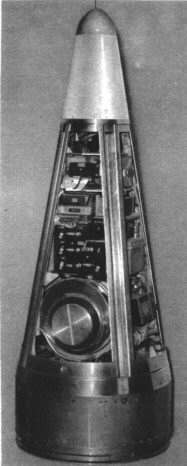biological compartment


The CERMA (Aero Medical Research and Studies Center) carried out, from 1963 to
1967, a series of biological experiments during ballistic flights using
Veronique and Vesta rockets. The animals were successively rats (3 flights),
cats (2 flights) and monkeys (2 flights).
The rocket nosecone which comprised a sealed compartment, was recovered thanks
to a system consisting of a parachute and a beacon for the location. The aim of
these studies was to evaluate the role of the microgravity on the animal behavior.
Different neurophysiological parameters were recorded and transmitted back to
earth during the flights.
Launches on behalf of CERMA
| Date | Site | Vehicle | Mission | Results |
|---|---|---|---|---|
| 22 Feb 1961 | HMG | Veronique AGI24 | Rat Hector | Success, (110 km) recovery |
| 15 Oct 1962 | HMG | Veronique AGI37 | Rat Castor | Success, (120 km) late recovery |
| 18 Oct 1962 | HMG | Veronique AGI36 | Rat Pollux | Success, (110 km) no recovery |
| 18 Oct 1963 | HMG | Veronique AGI47 | Cat Felicette | Success, (155 km) recovery |
| 24 Oct 1962 | HMG | Veronique AGI50 | Cat | Failure, (88 km) |
| 07 Mar 1967 | HMG | Vesta 04 | Monkey Martine | Success, (243 km) recovery |
| 13 Mar 1967 | HMG | Vesta 05 | Monkey Pierrette | Success, (234 km) recovery |
External Resources
Life science suborbital flights